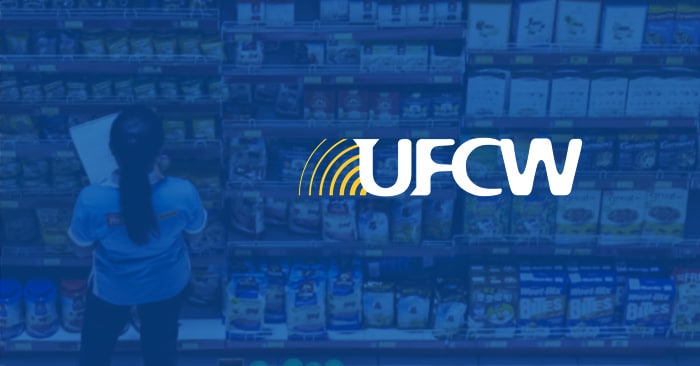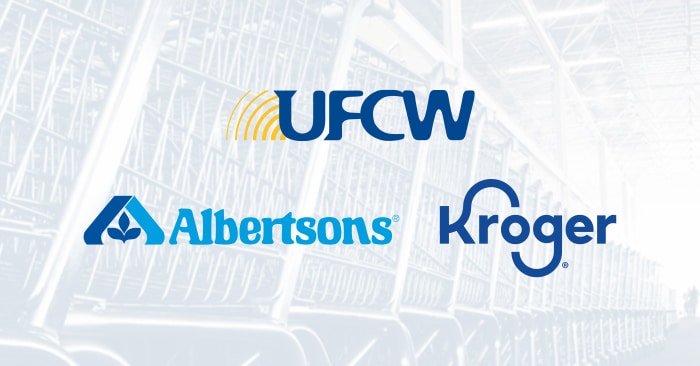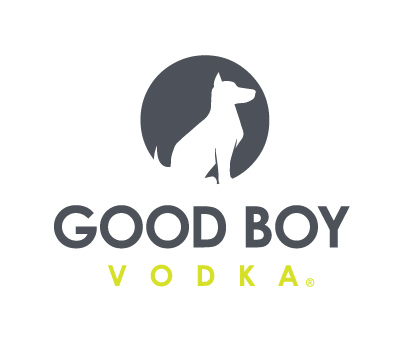How Brands and Distributors Can Help Protect Grocery Workers

As grocery workers help feed Americans sheltering in place, at least 30 have died from COVID-19, with nearly 3,000 reporting missing work due to symptoms, according to the United Food and Commercial Workers International Union (UFCW).
Today the UFCW condemned Amazon, which in the past few weeks has fired multiple workers who voiced concerns about hazardous work conditions, including one who led a strike at the company’s Staten Island-based facility. According to UFCW, at least 74 Amazon warehouses and delivery facilities have seen outbreaks. Adding to the gravity of the situation, yesterday The New York Times reported six workers at a Washington, D.C.-based Whole Foods tested positive for coronavirus.
“This is now a matter of life and death,” UFCW International President Marc Perrone said of Amazon and Whole Foods workers.
Safety Efforts
In survey results published Monday, UFCW, which represents over 900,000 grocery workers, asked over 5,000 of them about safety in stores: 85% said customers are not observing social distancing.
”The coronavirus pandemic represents the greatest health and safety crisis that America’s grocery and food workers have ever faced,” Perrone said. “More must be done to protect them and our food supply now.”
Grocers have so far taken various approaches to promote worker safety, from installing plexiglass at checkout to designating employees who monitor social distancing in and outside the store. Starting Tuesday, The Fresh Market began requiring customers to wear face coverings after already requiring its employees to do so, following the Center for Disease Control (CDC)’s guidance. Whole Foods Market and Kroger have designated some stores as click-and-collect sites, delivering orders to customers’ cars rather than allowing in-store shopping.

To further increase protections, UFCW and retailer Kroger on Tuesday called on federal and state leaders to temporarily designate grocery workers as “extended first responders” or “emergency personnel,” noting the “significant daily risk these workers face.” The move follows a similar effort launched April 7 by UFCW and retailer Albertsons.
“This is not just about protecting grocery store workers; it is also about protecting the customers they serve and our nation’s food supply in general,” Tuesday’s statement reads.
Additionally, UFCW’s new #ShopSmart campaign advises that customers wear masks, stay six feet away from employees and other shoppers and dispose of used gloves and masks.
States are also stepping up to the plate. In an email today to Massachusetts Governor Charlie Baker, 42 lawmakers asked for any store with online ordering and delivery to also have curbside pickup and to encourage all stores to offer it. Additionally, New York, Maryland, Pennsylvania and Connecticut are requiring citizens to wear masks outside their homes, including in stores.
But is any of this enough? One set of interactions at least starting to be scrutinized is around brand representatives and their trips into the store. Whole Foods recently took the step of limiting the number and hours of merchandisers who can come in, but there has not yet been an industry-wide effort to promote best practices for how brands can help keep grocery workers safe. Nevertheless, as companies scramble to increase production and refill shelves, they may be able to help reduce potential grocery worker exposure to the virus.
From Facility to Shelf
Although the FDA and USDA have emphasized that both food and food packaging are unlikely to transmit COVID-19 to consumers or employees, there are human interactions involved in bringing goods from facilities to grocery stores.
With regard to manufacturing, the UFCW has called on the CDC to instill guidelines for retailers and food processing facilities, demanding those factories provide protective equipment, including face masks, and ensure workers wear them, along with implementing social distancing across the workplace. (If social distancing is not possible, PPE must be used without exception, the UFCW notes.) Safety practices must also be clearly posted throughout the workplace in a variety of languages.
But what about when the products leave the plant? Distributors and wholesalers are deemed “critical infrastructure,” putting them in the line of potential transmission, and they make multiple stops. While food delivery services have adopted contactless methods, CPG companies may have more middlemen to manage on the route to market than restaurants have when they deliver.
Hilary Thesmar, chief food and product safety officer for the Food Industry Association (FMI) said manufacturers must follow the CDC’s policies, along with those of state and local officials, throughout their supply chains. She noted that the American Trucking Association’s guidelines, which advise against the sharing of tools and equipment, for example, have also helped promote safety en route to grocery stores.
UNFI CEO Steven Spinner said in a statement that as the company has added warehouse workers and drivers to meet demand, it’s been following government regulations, along with implementing new protocols to help limit contact for pickups and deliveries. Drivers are also provided with disinfectant wipes, hand sanitizer, and gloves that must be changed between deliveries. There are also “heightened sanitation requirements” for trucks, Spinner noted.
Supporting Workers in Stores
At the store end of the supply chain, Max Baumann, founder and CEO of food and beverage merchandising agency Basemakers, advised merchandisers and brands to be “service-minded.” He said that asking retailers what they need is crucial as they navigate unprecedented challenges.
“Now is the time to help lighten the burden of our grocery industry staff wherever it’s possible and they request it,” he said.
Sending a merchandiser who represents multiple brands into stores helps limit contact by reducing overall traffic, he noted. But with Whole Foods creating restrictions around merchandisers entering, this itself could become difficult to navigate.
“Besides the CDC guidelines, if you can focus on merchandising stores before and after hours or during slow periods like midday on weekdays, that helps them,” Baumann said.
CBD brand Weller co-founder John Simmons said that selling products online (though it may sound like an obvious step) helps reduce the number of customers in grocery stores. He added that companies should not only ensure their own workers use PPE, but if possible, donate supplies to grocery store staff.
Additionally, Baumann said brands can use their social media platforms to educate on grocery worker issues and safety.
CPG companies should have a “deep sense of empathy for what grocery store team members are going through to be of service to consumers across the country,” Baumann said.
BevNET managing editor Marty Caballero contributed to this story.
















